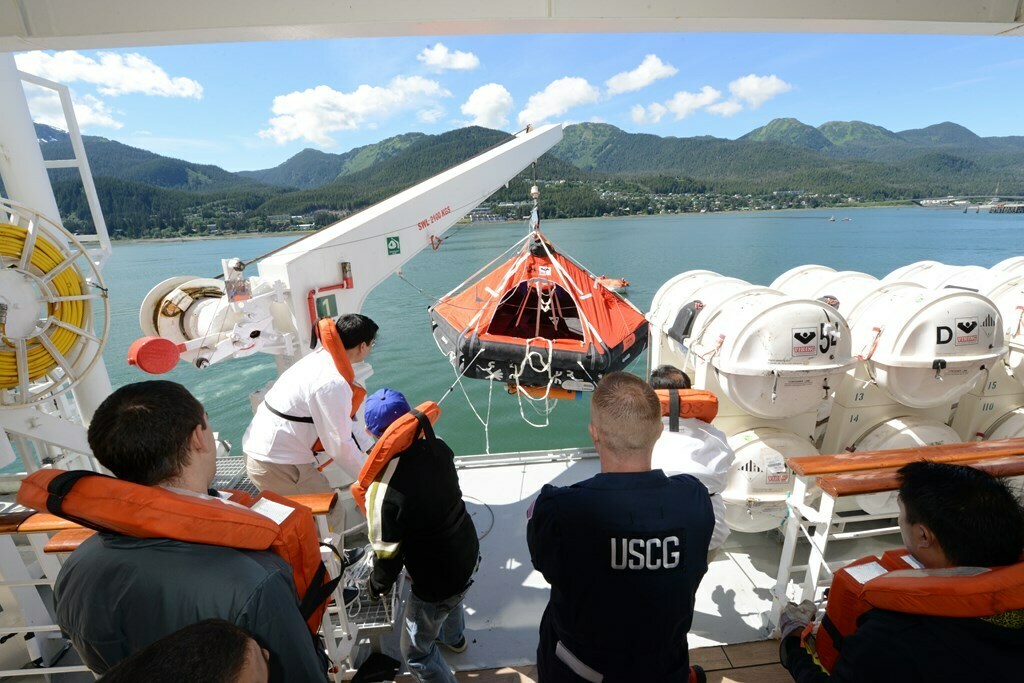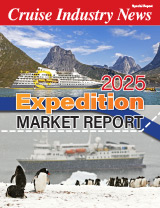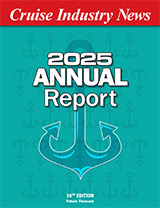The cruise industry came together earlier this week in Florida for the Passenger Ship Safety event, featuring a two-day conference program and adjacent trade show touching on innovative topics ranging from LNG to safety compliance, fire fighting, crew safety training, the latest regulations and much more.
24 Hour Patrols
Among significant changes at Carnival Cruise Line has been the addition of 24-hour manned fire patrols in high-risk areas, said Martina Gallus, director of deck and safety.
“The human element is the chief factor,” she said. “The fire patrol can help much more than a detection system.”
Among other improvements are enhanced structural fire protection, new fuel flex hoses and enhanced fuel spray protection areas, in addition to better cover protection on hot spot areas of the engines.
Culture
At MSC Cruises, the safety culture goes all the way to the top, according to Ryan Allain, vice president safety, security and environment for MSC Cruises USA.
The Italian brand has recently moved much of its operations office out of Sorrento, relocating to the United Kingdom. In addition, ships can expect twice-yearly three-week visits from a traveling safety team that audits the fleet.
“It’s a lot of work,” said Allain of the company’s traveling safety program. “There is absolutely no down time. It’s a very thorough and comprehensive program.”
On the MSC Divina’s last two port state inspections from the United States Coast Guard (USCG), the ship passed with flying colors: zero deficiencies.
Damage Stability
There are ongoing efforts to enhance survivability at Royal Caribbean Cruises, looking at standards for long rake damage and other vulnerabilities, according to Joseph Miorelli, associate vice president, technical newbuild projects.
“All brands are now following a new policy for monthly damage response drills,” said Miorelli. “This includes the capability to asses damage conditions in 20 minutes, and have clear roles and responsibilities for response teams and operational command.”
In planning stability requirements, the life-cycle of the vessel should also be taken into consideration, as well as the idea that weight may be added to the top of the ship at some point in the future, Miorelli said.
Human Factor
The United States Coast Guard has evolved from checklist inspections of cruise ships, focusing on a holistic approach and zoning in on crew training and the all-important human factor, said Brad Schoenwald, senior marine inspector/lead examiner for the Cruise Ship National Center of Expertise.
“It is about measuring the actual performance of the crew rather than their knowledge alone,” Schoenwald said, adding that having the crew sit in a room listening to lectures or watching videos was not good enough, and that crew training was an ongoing issue. “We ask them all sorts of questions.
“Crew performance continues to be one of the largest (issues),” Schoenwald continued.
The Center of Expertise also participates from the design phase of the ship, commenting on potential design features, visiting ships during construction, inspecting upon delivery and then inspecting again upon arrival to the United States.
Fire Fighting
John Hemgard, marine business director at Marioff, said the highest risk area to a cruise ship is an engine room fire.
Marioff provides high-pressure water mist systems to the industry, which Hemgard said could be activated in as little as 30 seconds. This is as opposed to CO2 systems, which he explained could take up to 30 minutes to deploy after spaces are evacuated and ventilation shut off.
“Don’t wait, activate,” Hemgard said. “Time is money.”
Among his upcoming challenges, LNG and lithium batteries.
On big ships, there can be thousands of fire nozzles, and ongoing testing and maintenance were a focus area on Tuesday morning at Passenger Ship Safety.
“The biggest fear is corrosion in the nozzle leading to a failure to release,” noted Ultra Fog’s David Sherrington, senior project engineer.
The human factor can also be enhanced by better personal protective equipment, advised Edward Verweu, vice president of sales for Scandia.
“There should be more of a focus on that, and that is the reason we are here,” he said, adding engine room staffers should have better flame retardant coveralls, among other examples.
Joep Bollerman, operations manager, passenger ship support center, Lloyd’s Register, pointed to the importance of a solid safety management system in supporting decision making.
“It is to ensure support on the ship for the day-to-day operation and emergency operations,” he said. “It’s a reflection of best practices. If you have the proper safety management system it helps you identify the best way forward.”
Fresh Format
The niche event had a fresh format, with cruise lines and suppliers talking openly. There was a single conference program spanning two days that included all 150 attendees. Operations, safety and newbuild executives, along with suppliers and interested parties, were fully engaged. Each presentation ended with an abundance of intelligent questions from the audience.
The next Passenger Ship Safety event is set for Southampton, April 4-6.
Read a full report in the Cruise Industry News Quarterly Magazine Spring 2017 edition.




